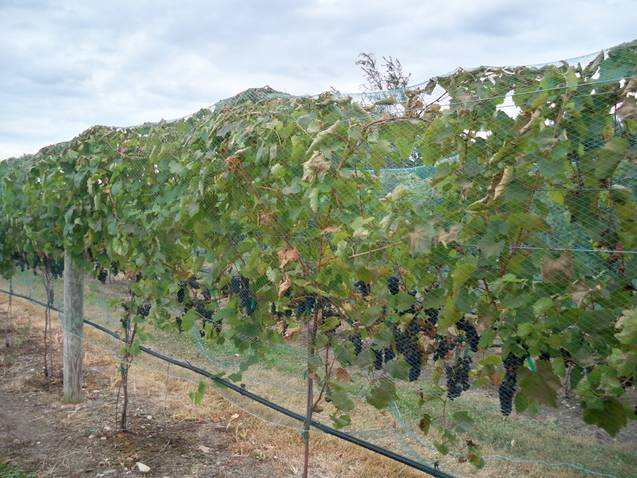Vegetable Oil Provides Grape Frost Protection in Nebraska Study
In December, Midwest Wine Press published a news item about the results of a five-year research project that showed applying vegetable oil to vines significantly delayed bud break. The study was by Seth McFarland and University of Nebraska viticulture professor Max McFarland, co-owners of Mac’s Creek Vineyards & Winery in Nebraska.
See related article: New Research: Vegetable Oil Delays Vine Bud Break
A number of readers expressed an interest in learning more about this research. The McFarlands kindly agreed to write this follow-up article explaining their study regarding grape frost protection in more detail.
Nebraska winters can be harsh, even brutal and certainly damaging to grapevines. Ambient temperatures can plummet to the -10 to -25 degrees Fahrenheit range for anywhere from one night to a week; volatile temperatures can result in 60 degree F temperatures in January and February, and late frosts can occur (even late into May). With these conditions, extensive damage to early budding grapevines can and will occur.
The purpose of this research was to evaluate techniques designed to enhance grapevine cold hardiness. Specifically, effects of late spraying of dormant vines with vegetable oil designed to delay bud break. This research is an expansion upon the early work begun by Dr. Imed Dami from Ohio State University (2004).
The purpose of this research was to evaluate techniques designed to enhance grapevine cold hardiness.
Mac’s Creek’s research continued Dami’s usage of Amigo Oil , mixed at a 10% solution and began with an application rate of approximately 20-25 v 40 -45 gallons per acre. Optimal rate for this research was determined to be the 40-45 gallons per acre rate, and this methodology has been held consistent across the most recent three years of study.
Each cultivar studied was divided into two or more groups by rows:
Group #1 (at least 30 vines) received no spray at all.
Group #2 (at least 30 vines) were sprayed with the Amigo Oil solution.
First application typically would be applied approximately mid to late February and subsequent applications were made approximately every two weeks until bud swell began. When bud swell began (approximately late April), spraying of Amigo Oil stopped and a research assistant rated the buds every week until almost all buds were rated as ‘open with one leaf unfurled.” Vines were pruned before spray applications began.
Over the five years of research, several variables have been studied:
1) Effectiveness of Amigo Oil compared to Alginate Gel;
2) Effectiveness of application of Amigo Oil with Backpack sprayer compared to Air Blast sprayer;
3) Application at 20-25 gallons per acre compared to 40 -45 gallons per acre;
4) Long pruning compared to short pruning (high cordon and VSP trellising only); and
5) Single versus multiple applications.
Other variables studied include:
1) Multiple cultivars (e.g., Edelweiss, Lacrosse, Marechal Foch, St. Croix, Brianna);
2) Effectiveness across three different sites representing three different areas of our state, and, three distinctively different microclimates; and
3) A Cost/Benefit analysis was completed considering the five-year averages which have been obtained.
Results across the past five years and across three different microclimate locations were profound. Graphs describing these results across the five year study can be accessed on the VitiNord website by clicking here.
The application of Amigo oil resulted in significant delay in bud break, ranging from five days to three weeks across different cultivars. This delay made the difference between grapevines producing on primary buds versus secondary or tertiary buds, or, not producing at all. Additional benefits included uniformity of ripening and because of uniformity of ripening on primary buds, most certainly, quality of fruit.
The impact of these findings on the viticulture industry in Nebraska could potentially be quite significant and enable the industry to take a giant stride toward sustainability.





I’ve spoken with a large Concord grape grower who says that they tried a soybean oil several years ago, that it did delay bud break, but they had difficulty ripening the crop. He did not say whether it was an overly heavy crop, or an early fall. They tend to produce heavy crops year in and year out. Anyone else have experience in Concords?